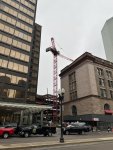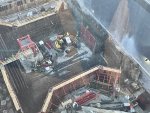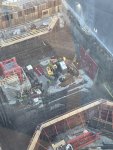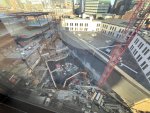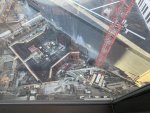All of that land is fill and at 0' elevation. Nobody should be living there in a world of rising tides, with or without a flood barrier.
Off-topic for this thread but what you're saying is a common misconception. Logan's tarmac is really
not at a significant flood risk, despite its location by the harbor. Logan has a lower storm surge flood risk, for example, than most of the East Boston neighborhoods around it, all of the Seaport, all of the South End, all of the Bulfinch Triangle, all of the Sullivan Square area, much of Downtown, etc.
You can see this easily in the
Climate Ready Boston Maps. If you turn on layers for "Stormwater Flooding: Near-term" (green below) and "10% Annual Coastal Flood Risk: 2070s" (blue below), for example, Logan is totally clean while much of the City is very much not:
Even if you dial up the risk to "1% Annual Coastal Flood Risk: 2070s" you still see a lot of clean land at Logan, although floodwaters do start to encroach. But again, plenty of established residential neighborhoods are in significantly worse shape than Logan under this 100-year storm scenario 50 years into the future. When you also figure in that Logan land is also much better suited for resiliency improvements than existing neighborhoods are due to Logan's blank canvas nature, it makes it even more relatively resilient for the future.
I don't want to take this thread further off the rails, but this comes up all the time on aB and when making assumptions about the projected impacts of future climate change it's important to stick to the facts. Just because Logan
feels like it will be flooded, that doesn't mean it will be.

